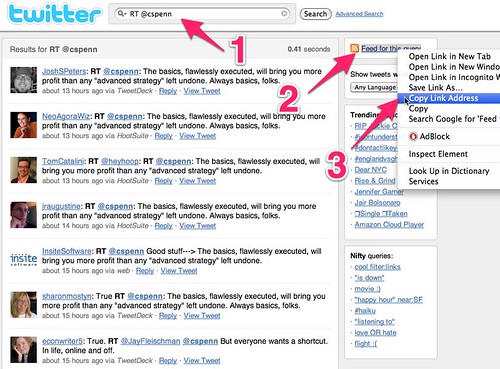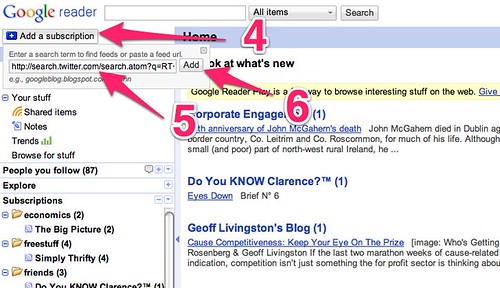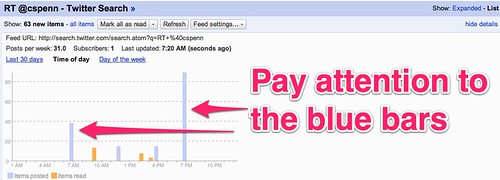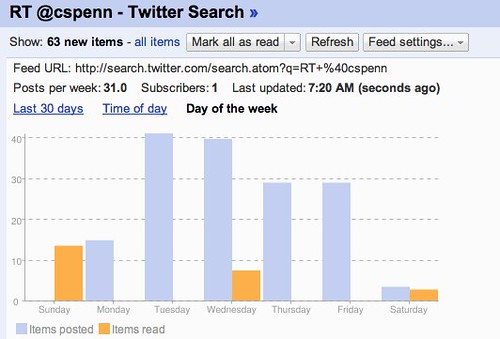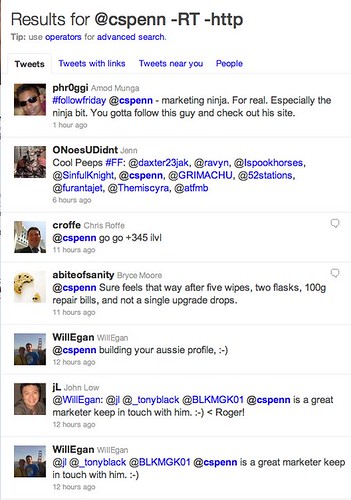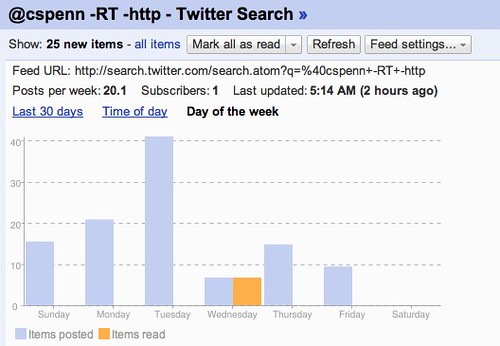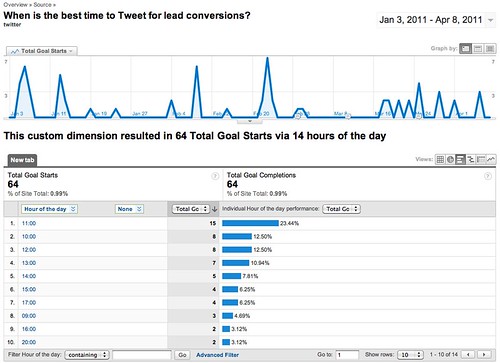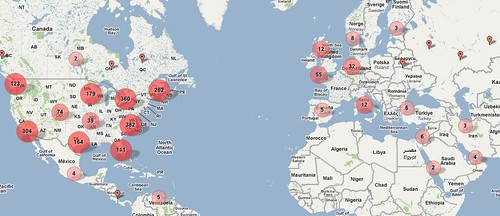Other posts in the series:
- What's Obvious to You? by Ann Handley
- With Great Challenge Comes Great Adaptability, by Michelle (Chel) Wolverton
- 4 Steps To Awaken Your Superhero Power, by DJ Waldow
- The power of realization or Superheros are where you find them, by Helena Bouchez
- Making the Jump, by Tamsen Webster
- We All Have It In Us, by C.C. Chapman
- Teaching the Pebbles, by Bryce Moore
- Stop Being the Green Lantern of Business, by Justin Kownacki
- Taking The Vow of Super Heroism, by Whitney Hoffman
- Crisis and Motivation, by John Wall
 I’ll admit to some bias where Chris Penn is concerned. He and I share a similar purpose in life, I think, even though we approach it from two totally different directions.
I’ll admit to some bias where Chris Penn is concerned. He and I share a similar purpose in life, I think, even though we approach it from two totally different directions.
I’ve always believed in the superhero idea, and this idea of Chris’s rings particularly true: we have superhero powers, but we don’t necessary have superhero awareness.
Which brings me to ask this question: What makes a superhero?
And my answer: The belief you already are one.
We so often keep our eyes focused on what’s next, on where we want to be. On who we wish we were, or on what we wish we were doing. But the path between here and there has to built, and it has to built on something.
That something is you.
My friend Matt Ridings talks about change in terms of building a bridge. Between where you are and where you’re going is the path, the bridge, to get from here to there. But what a lot of us forget is that to build a bridge, you need solid ground on both sides: not only do we need to have at least a directional idea of where we want to go (the other side) and a clear idea of how to get there (the bridge itself), we also need solid ground to build on — right now.
We forget the importance of finding our current bedrock. Of knowing — and valuing — the person that we are, right now. It’s that appeciation, that valuation, that gives us the confidence, and the courage, to step out over the chasm and onto the bridge we’ve built.
To me, that’s what awakening your superhero is all about: it’s about understanding where your bedrock is, and what it’s made of. It’s about finding your footing where you are, so that you have a steady base from which to step.
Without that firm footing we’re literally leaping out at the unknown, with no purpose, and no purchase to our grip.
It’s counterintuitive, I know: since we want to change, doesn’t that mean, by definition, we dislike where we are now? Or, at least, doesn’t that mean there’s something about us, right now, that warrants change? After all, if we were happy where we are, change wouldn’t be necessary, right?
But change, real change (as any superhero-awakening is) requires enormous strength. And ignoring — or worse, degrading or denying — some part of yourself you consider unworthy, weakens your position right off the bat.
It’s like starting with half a you — because that is, in essence, what you’re doing. You’re trying to make a whole change with only part of you.
And that never works.
No, the answer lies in taking yourself, warts and all. Of being honest with yourself, about yourself. In finding how to turn your weaknesses into strengths (or at least in figuring out how the strengths you already have are well-suited to mitigating your faults), and in starting in a position of comfort — of confidence.
So how do you do that?
Find something you’re proud of. No, really. There’s something about you that you like. Or at least, don’t actively dislike. What is that? How can you build on it?
Find the Force to your Dark Side. Also really. For those of us used to beating ourselves up, sometimes it’s easier to start from the negative. I’m not suggesting you stay there, but for each of us, we often have the antidote to our particular brand of poison within ourselves. So figure out what you don’t like, and then look for the thing you already have that balances it out. It’s there. Trust me.
Find a cheerleader. Our internal tape loops get worn out after a while, and we need to hear an outside voice. Find someone who believes in you. Unflinchingly. But someone who can give you straight-up honest feedback — in a way that you’ll actually hear it.They’re the ones who can help set your course, but remind you, too, of how fun where you are right now can be.
Find your purpose. Yes, this one dives a little deeper, but: What are you here for? What ties all that you do together? What do you really care about? We all do better when we have something to work towards. What is that for you?
Find your beliefs and values. There’s where you want to go… and then there’s how you want to get there. So know, going in, what you hold dear. What’s most important to you? What assumptions guide your thoughts? What price are you willing to pay? And, perhaps most important what price is too high?
You can only make a leap by pushing off the ground you’re standing on, so you better know what that is.
It’s time to fly, superheroes.
So go on. Grab your cape (or not). And go.
•
 Tamsen Webster specializes in how to tell the right story to the right people at the right time. As the Senior Vice President for Executive Communications at Oratium, a messaging consultancy, Tamsen is responsible for helping brands and individuals tell their stories day-to-day to drive business results. Reach her at [email protected], and follow her on Twitter (@tamadear).
Tamsen Webster specializes in how to tell the right story to the right people at the right time. As the Senior Vice President for Executive Communications at Oratium, a messaging consultancy, Tamsen is responsible for helping brands and individuals tell their stories day-to-day to drive business results. Reach her at [email protected], and follow her on Twitter (@tamadear).


 Justin Kownacki is a writer, videographer, brand strategist and media consultant. Since 2003, he’s created and produced the web sitcoms Something to Be Desired and The Baristas. He also tweets far, far too much. You can find Justin on the web here:
Justin Kownacki is a writer, videographer, brand strategist and media consultant. Since 2003, he’s created and produced the web sitcoms Something to Be Desired and The Baristas. He also tweets far, far too much. You can find Justin on the web here:  I , (insert name here), also known as (insert Super hero Name here) promise to always use my SuperHero powers for good. I promise I will use the items I’ve purchased here today safely and in the name of Justice. I promise to remain ever vigilant, ever true.
I , (insert name here), also known as (insert Super hero Name here) promise to always use my SuperHero powers for good. I promise I will use the items I’ve purchased here today safely and in the name of Justice. I promise to remain ever vigilant, ever true. Whitney Hoffman is Director of Operations for the Podcamp Foundation, a digital media consultant, and author of the upcoming
Whitney Hoffman is Director of Operations for the Podcamp Foundation, a digital media consultant, and author of the upcoming 





